Security Information and Event Management (SIEM) tools offer comprehensive visibility and management of an organization’s security events through real-time analysis and correlation of data from multiple sources.
SIEM solutions provide a centralized platform for managing security alerts and logs from various sources such as network devices, servers, and applications. They help identify and mitigate potential threats by analyzing event data for unusual patterns and correlations. These tools are crucial for maintaining compliance with industry regulations and improving incident response times.
What are the key features?
What are the benefits and ROI?
SIEM solutions are widely implemented in industries like finance, healthcare, and retail, where large volumes of sensitive data require stringent security measures. Financial institutions use SIEM to detect and respond to fraudulent activities, while healthcare organizations rely on them to protect patient information.
Organizations benefit from SIEM by gaining better control over their security environment, ensuring compliance, and responding swiftly to incidents, thereby minimizing potential damage.
| Product | Market Share (%) |
|---|---|
| Wazuh | 10.2% |
| Splunk Enterprise Security | 9.2% |
| IBM Security QRadar | 7.0% |
| Other | 73.6% |





















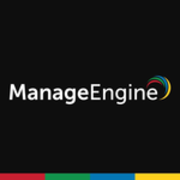





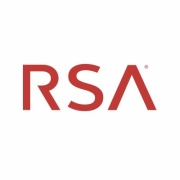

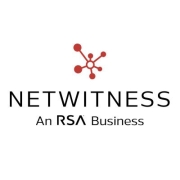





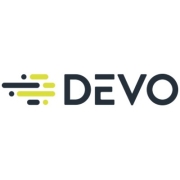





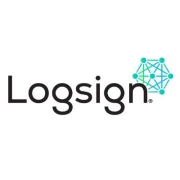























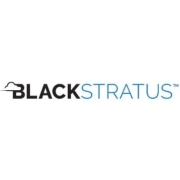









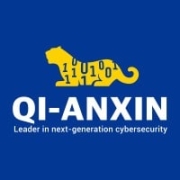








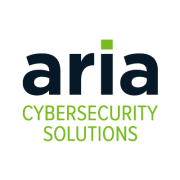
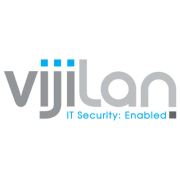




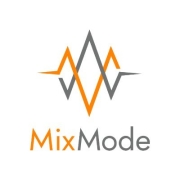









As with any enterprise tech solution, it’s important to spend time doing your research and POC, so that you know that you’re spending on the right product. We sifted through some of our users’ answers to summarize some of the best tips.
Before starting to evaluate solutions, It’s important to define what you want to accomplish with a SIEM. Marty Baron says, “Every SIEM has different strengths and weaknesses so you need to know what is most important to you in terms of goals, so you don’t waste time looking at something that can’t do the thing you need it to do.”
As one of your users says, “Review a finite number of products, otherwise you’ll never finish”. Although it’s important to spend time doing due diligence, you need to get to the point of implementation. If you have too many options, it will take too long to make a decision. Users suggest making a shortlist of options that meet your technical requirements, speak to your goal, and match your budget
Once you’ve narrowed down your options, it’s time to trial the shortlisted products. Users recommend putting a framework in place to guide the POC. This way, you can evaluate your options systematically.
One user, DAX Paulino, suggests “creat[ing] a checklist of features that you need, from the basic (i.e. interactive dashboards, ease of integration, Threat Intelligence), to the more advanced (i.e. Automated response, Behavior Analytics, etc.). Give each item on your checklist a score so that you can weigh in on each item as a measure of your decision. Don’t forget to factor in usability and support.”
Security Information and Event Management (SIEM) tools are essential for organizations to effectively manage and monitor their security infrastructure. These tools collect, analyze, and correlate security event data from various sources to provide real-time insights into potential security threats. There are several types of SIEM tools available in the market, each with its own unique features and capabilities. Here are some of the different types of SIEM tools:
1. On-Premises SIEM: This type of SIEM tool is installed and managed within an organization's own infrastructure. It provides complete control over data storage and security, making it suitable for organizations with strict compliance requirements or those that handle sensitive data.
2. Cloud-Based SIEM: Cloud-based SIEM tools are hosted and managed by a third-party provider. They offer scalability, flexibility, and reduced maintenance costs. Cloud-based SIEMs are particularly beneficial for organizations with limited IT resources or those that require rapid deployment.
3. Open-Source SIEM: Open-source SIEM tools are freely available and can be customized according to an organization's specific needs. They provide a cost-effective solution for smaller organizations or those with limited budgets. However, open-source SIEMs may require more technical expertise for implementation and maintenance.
4. Managed SIEM: Managed SIEM services are outsourced to a third-party provider who monitors and manages an organization's security infrastructure. This type of SIEM is suitable for organizations that lack in-house expertise or resources to manage their security operations effectively.
5. Log Management SIEM: Log management SIEM tools focus primarily on collecting, storing, and analyzing log data from various sources. They provide insights into security events and help identify potential threats. Log management SIEMs are often used in conjunction with other security tools to provide a comprehensive security solution.
6. Compliance SIEM: Compliance SIEM tools are designed to help organizations meet regulatory requirements and industry standards. They provide predefined compliance reports and automate the process of generating compliance-related documentation.
7. Advanced Threat Detection SIEM: Advanced threat detection SIEM tools use machine learning and behavioral analytics to identify and respond to advanced threats. They can detect anomalies, patterns, and indicators of compromise that may go unnoticed by traditional security tools.
Security Information and Event Management (SIEM) tools are essential components of an organization's cybersecurity infrastructure. They provide real-time monitoring, analysis, and reporting of security events and incidents across the entire IT environment. SIEM tools collect and correlate data from various sources, such as network devices, servers, applications, and security devices, to identify potential security threats and provide actionable insights for incident response. Here is an overview of how SIEM tools work:
1. Data Collection: SIEM tools collect logs and events from diverse sources, including firewalls, intrusion detection systems, antivirus software, and servers. They can also ingest data from network flows, vulnerability scanners, and user activity logs.
2. Log Aggregation: The collected data is aggregated into a centralized repository, which allows for efficient storage and retrieval. This repository serves as a single source of truth for security events and logs.
3. Normalization: SIEM tools normalize the collected data by converting it into a standardized format. This process ensures that data from different sources can be compared and correlated effectively.
4. Correlation and Analysis: SIEM tools analyze the normalized data to identify patterns, anomalies, and potential security incidents. They use predefined rules, algorithms, and machine-learning techniques to detect known attack signatures and suspicious activities.
5. Alert Generation: When a potential security incident is detected, SIEM tools generate alerts or notifications. These alerts are sent to security analysts or administrators, who can then investigate and respond to the incident promptly.
6. Incident Response: SIEM tools provide incident response capabilities by integrating with other security tools, such as ticketing systems or orchestration platforms. This integration enables automated or manual incident response workflows, ensuring that security incidents are addressed in a timely manner.
7. Reporting and Compliance: SIEM tools generate comprehensive reports and dashboards that provide insights into the security posture of an organization. These reports help security teams identify trends, measure the effectiveness of security controls, and demonstrate compliance with regulatory requirements.
8. Threat Intelligence Integration: SIEM tools can integrate with external threat intelligence feeds to enhance their detection capabilities. By leveraging up-to-date information about known threats and indicators of compromise, SIEM tools can better identify and respond to emerging security risks.
9. Continuous Improvement: SIEM tools allow security teams to fine-tune their detection rules and algorithms based on the analysis of historical data. This iterative process helps improve the accuracy and effectiveness of security event detection and response.
The evolution of Security Information and Event Management (SIEM) technology marks a significant journey from basic log management to the sophisticated platforms we see today, capable of advanced threat detection and automated response. Initially, SIEM systems served primarily to aggregate and analyze log data, providing a consolidated view of security events across networks. However, the ever-increasing sophistication of cyber threats demanded a more advanced approach.
Today's SIEM solutions have transcended their original functions, integrating capabilities such as real-time threat detection, automated incident response, and seamless integration with other critical security tools, including Endpoint Detection and Response (EDR) systems and threat intelligence feeds. This progression has been significantly driven by the advent of artificial intelligence (AI) and machine learning (ML), which have enhanced SIEM's ability to perform predictive analytics, enabling organizations to proactively identify and mitigate potential security threats before they can impact business operations.
Looking forward, the trajectory of SIEM technology points towards an increasing reliance on cloud-based solutions, offering scalability, flexibility, and reduced infrastructure complexity. The top three SIEM solutions leading this evolution are Microsoft's Azure Sentinel, Splunk Enterprise Security, and IBM QRadar, each offering unique capabilities to meet the growing demands of modern cybersecurity landscapes.
As SIEM technology continues to evolve, its role in ensuring organizational security in the face of advanced cyber threats will undoubtedly grow, marking a new era of cybersecurity intelligence and defense.
A SIEM (Security Information and Event Management) system is a software solution designed to provide real-time analysis and management of security alerts generated by applications and network hardware. It centralizes the collection and analysis of security data, helping organizations detect, investigate, and respond to cybersecurity incidents.
The top 3 SIEM solutions are: Microsoft Sentinel, Splunk Enterprise Security and Wazuh.
A SOC (Security Operations Center) is not a software solution but an organizational function or team dedicated to continuously monitoring and improving an organization's security posture while preventing, detecting, analyzing, and responding to cybersecurity incidents with the aid of various tools, including SIEM systems.
In essence, SIEM is a tool or technology, while a SOC is a team or facility that uses tools like SIEM, among others, to ensure security.
SIEM solutions enhance threat detection by aggregating and analyzing data from various sources, such as network devices, servers, and applications. By correlating events and identifying patterns, SIEM solutions can detect potential security incidents that might otherwise go unnoticed. Real-time monitoring and advanced analytics enable you to quickly respond to threats, minimizing the risk of data breaches and other security incidents.
What are the common challenges when implementing SIEM solutions?Implementing SIEM solutions can present several challenges, including the complexity of integrating diverse data sources, the volume of data generated, and the need for skilled personnel to manage and interpret the data. Additionally, fine-tuning SIEM rules to minimize false positives while ensuring accurate threat detection requires continuous attention and adjustment. Addressing these challenges is crucial for maximizing the effectiveness of SIEM solutions.
How can SIEM solutions aid in compliance reporting?SIEM solutions can streamline compliance reporting by automating the collection, retention, and analysis of log data required for various regulations, such as GDPR, HIPAA, and PCI DSS. By centralizing logs and providing pre-built compliance reports, SIEM solutions help you demonstrate adherence to regulatory requirements, reducing the time and effort needed for audits and ensuring that your organization remains compliant.
What role does machine learning play in modern SIEM solutions?Machine learning plays a significant role in modern SIEM solutions by enhancing their ability to detect sophisticated threats and anomalies. Through advanced algorithms, machine learning can analyze large volumes of data, identify unusual patterns, and adapt to emerging threats. This enables SIEM solutions to provide more accurate and timely alerts, reducing the likelihood of security breaches and improving overall threat detection capabilities.
How do SIEM solutions facilitate incident response?SIEM solutions facilitate incident response by providing real-time alerts, detailed context, and comprehensive forensic data for security incidents. By centralizing and correlating logs from multiple sources, SIEM solutions help you quickly identify the scope and impact of an incident. This allows you to take informed actions to contain and remediate threats, ultimately reducing the time and resources needed to respond to security incidents.